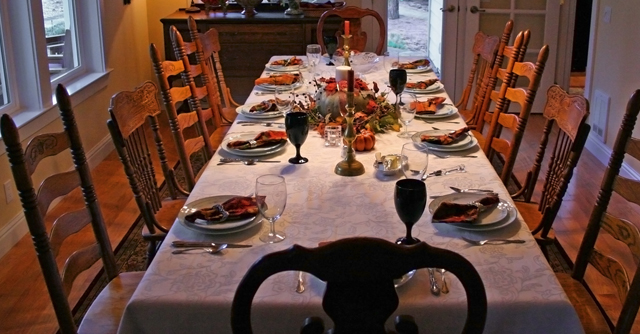9 tips for celebrating Halloween with diabetes

The fall season is finally upon us, and with it comes a certain kid-favorite holiday: Halloween. There are some steps you can take to enjoy spooky-sweet festivities when your child has diabetes. With a little planning and preparation, you can help manage blood sugar levels successfully. After all, Halloween is a time meant to be filled with scares — but diabetes shouldn’t be one of them!
Check out these tips for enjoying a sweet and safe holiday this year.
1. Plan Ahead
Whether your child is headed off to a local Harvest Fest, a friend’s home party, or trick-or-treating, make a plan for their Halloween haul. Sit down with them and discuss expectations and limits (such as how many pieces of candy they’ll be able to keep or eat right away) in advance so they know what to expect — after all, nothing sours a fun-filled evening like getting treats taken away unexpectedly! They’ll be more likely to be on board with a plan they helped create, so find out what’s most important to them about the day, and try to work together to meet in the middle so diabetes management can remain a priority.
2. Eat smart earlier
A healthy meal full of high-fiber carbs, protein, vegetables, and fat will help make sure your child is well-stocked with the right nutrients before heading out. If they’re full of the good stuff, they’ll be less likely to overindulge on treats. Plus, a full stomach will help prevent any drops in blood sugar if they’re going to be doing a lot of running around. Another tip? Avoid snacking until you’re home, so your child can dose the correct amount of insulin to cover the carbs in the candy they’re about to eat.
3. Keep an eye out for teal pumpkins
The Teal Pumpkin Project by Food Allergy Research and Education (FARE) raises awareness of food allergies and promotes inclusion of all trick-or-treaters. Homes with teal pumpkins set out indicate the family has non-food treats available, such as bookmarks, glow sticks, stickers, or other fun toys — great options for anyone looking to celebrate the holiday without too many sweets.
4. Use candy to treat lows
Can you eat candy on Halloween if you have diabetes? The short answer: yes! One fun trick (or treat!) is to separate the fast-acting sugary candy and create a special low box, a stash of non-perishable carbs available to treat your child in the case of a hyperglycemic event — after all, it’s more fun to treat a low with a fun-sized packet of Skittles than glucose tabs!
Generally, snack-sized candies have about 15 grams of carbs, and, according to the American Diabetes Association (ADA), chocolate and other higher-fat treats do not work as well for treating lows, so those can be set aside for other purposes. Just follow the 15-15 rule.
5. Pick and personalize
If your child’s likely to return home with more candy than you’d prefer, have them choose their favorite pieces and put them in a bag with their name on it. Apply this tip to all children in the house so the child with diabetes isn’t singled out.
6. Donate the rest
Once your child has picked their favorites, consider donating the rest — it’s a great way to teach your child the importance of giving back while limiting the amount of extra carbs they consume.
If you’re looking to get it out of the house, consider donating extra candy to:
- Ronald McDonald House Charities (provides comfort, care, and support for families with children who are sick)
- Treats for Troops or Operation Shoebox (active-duty soldiers)
- The Halloween Candy Buyback program (allows children to turn in their candy to participating dentists’ offices throughout the country in exchange for a goodie bag or another prize)
- Other community groups such as a local children’s hospital, your child’s school, your church, etc.
7. Redefine the word “treat”
Another tip from the ADA is the concept of trading. Some families have children trade in their Halloween candy for a prize, whether it’s a small toy, a movie ticket, or a fun activity like a trip to the zoo, or even cash it in for actual money or a gift card.
8. Limit pieces of candy per day
Teaching moderation is important, and it’s not good for anyone to eat too much candy in a day. Set a rule as to how many pieces of candy your child can eat per day and keep it out of reach of sticky fingers. Including a piece in their school lunch and allowing a piece when they come home as an afternoon snack or after dinner are good ideas. There’s about 25 days before Thanksgiving, so with enough rationing, their Halloween candy might just last them until the next big savory holiday!
9. Think beyond treats
No matter what age your kids are, there’s plenty of ways to celebrate Halloween without making candy and sugary treats the stars. Whether you opt for arts and crafts, a costume party, pumpkin carving or painting, watching a scary movie, visiting a haunted house, or going on a hayride, there’s plenty of ways to create lasting memories this holiday.
[Originally published 2015-10-22. Updated 2023-10-23]


